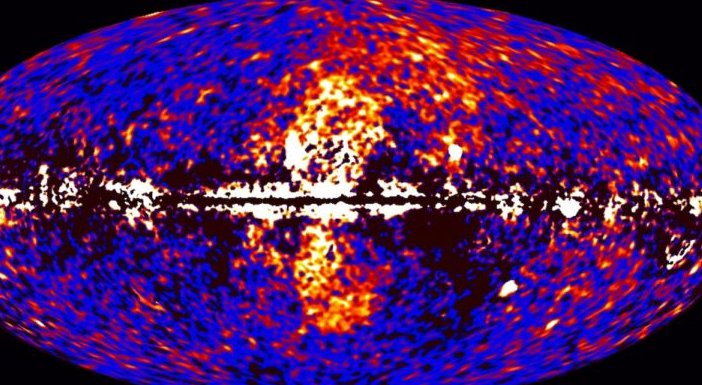Gamma ray evidence for dark matter outshone by a flock of pulsars
Ars Technica » Scientific Method 2018-08-10

Enlarge / Fermi's view of the galaxy's core. (credit: NASA/DOE/Fermi LAT/D. Finkbeiner et al.)
Not so long ago, I attended a general physics conference where a lot of people were very excited about the Fermi Large Area Telescope. Fermi observed high-energy radiation from the galactic center and found an excess that was hard to explain. Might this be a long-awaited sign of dark matter? Early calculations seemed promising.
Now, it seems that the signal might be due to pulsars and not dark matter.
What did Fermi see?
The Fermi telescope watches the sky for gamma rays. These are photons with energies in the range of 10 million electron Volts (eV) up to about 300 billion eV. For comparison's sake, light in the visible range is less than 10eV, while a standard X-ray machine in a hospital has photons with an energy of about 2,000eV. So gamma rays are photons that pack a serious punch.